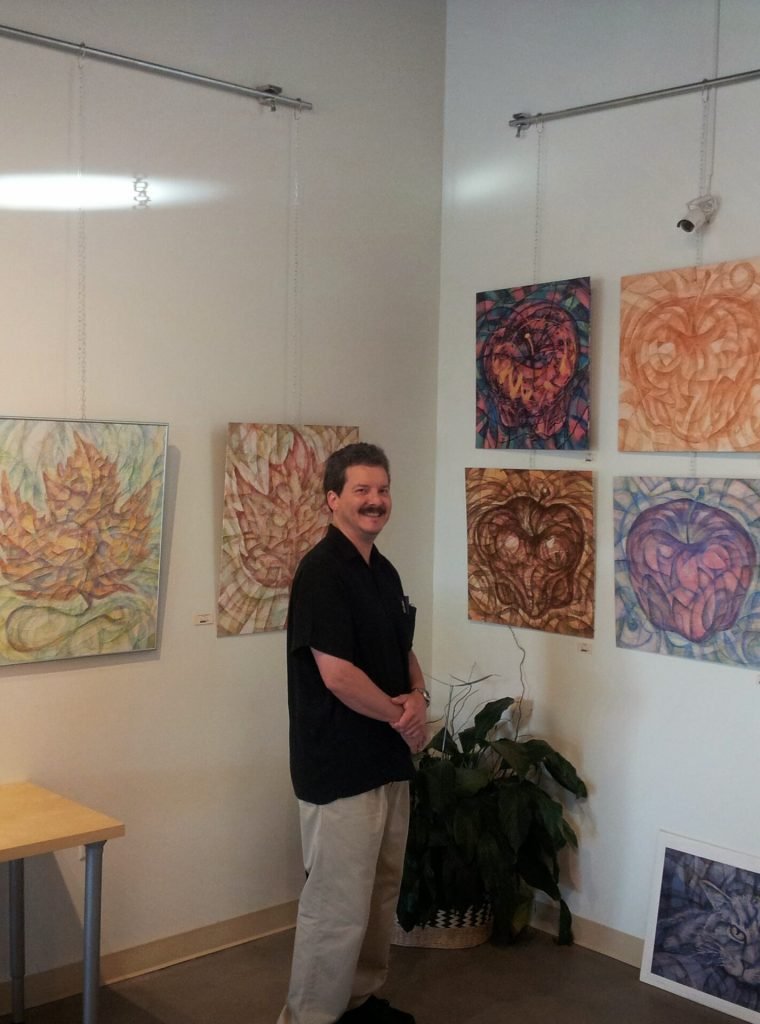Menu
Home
The Art of Just Karl
Karl’s discovery of “no-mind” painting opened him to inspiration from the abstract expressionists, notably the work of American artist Jackson Pollack.


About Just Karl
Born in San Francisco to creative family, Just Karl cannot recall a time when he did not make art. In 1969, he recalls his fascination with drawing images from America’s walk on the moon. In college, he also dabbled in oils, waiting for the chance to work with the acrylics that fascinated him.
“I never knew what I wanted to paint, though,” he said. “I was very caught up in figuring out what subjects were worth spending time with. I went through a time of emulating Dali and the other surrealists, but I wanted to create art that was somehow freer, less attached to anything.”
He began to move in this direction during a brief sojourn as a resident in a Zen Buddhist temple. Paring down his life to its simplest level, Just entered the temple to spend time in meditation and contemplation, to answer the question that poses itself in time to all men: Who am I?
Unlike his literary colleague Thoreau, Mr. Karl did not enter his self-imposed solitude in an effort to live more deliberately. To the contrary, the young artist was embracing a state of consciousness characterized by detachment and lack of judgment in which thoughts could move freely, leaving no trace or impression. A mind with no grasping thoughts or feelings which Zen calls “no-mind.”
According to Zen the mind serves best when thoughts and feelings flow as through a window glass rather than against a mirror. Meditation allows thoughts and feelings to pass through the mind transparently, without judgment or interpretation. Art that arises from a Zen consciousness avoids the representation of ideas through painting or sculpture, also known as iconography. Instead, the subject matter of Zen religious painting consists of natural forms, such as birds, grasses, rocks, fruits and mountains, presented merely as images in a style that combines a maximum of technique with a minimum of planning and deliberation.
One day during a time of reflection, Just drew an apple. He repeated the drawing over and over, almost like a mantra. In the repetition, the meaning of the symbol began to fade. Instead of an attempt to render shape, form, line or color, he found himself in the Zen state of “no mind.”
“It was at this point,” he explained, “that I felt my own expression overtake a conscious attempt to draw an apple. There was more freedom there. The walls were down, and I was finally painting on my own inner canvas. I felt less restrained by rules, and closer to the art I wanted to make.”
Karl’s discovery of “no-mind” painting opened him to inspiration from the abstract expressionists, notably the work of American artist Jackson Pollack.
“Suddenly, I could see where his work had a life of its own—a sort of controlled chaos out of which shapes just arose, more organically beautiful than carefully planned. Ego is in the brush stroke, but in his dripping technique was something so natural and moving.”
He has own dripping technique, using gallon cans of latex house paint which he calls “a controlled accident, a harmonious chaos.”
In another nod to his Zen sensibilities, Karl titles his pieces, and rarely signs his work. “Words are their own medium and our most powerful symbols. Titles influence the way a piece of art is viewed, so I stay with the simplest, most obvious ways of differentiating one from the other.”
Just Karl earned a Bachelor of Fine Arts degree from the College of William and Mary.

